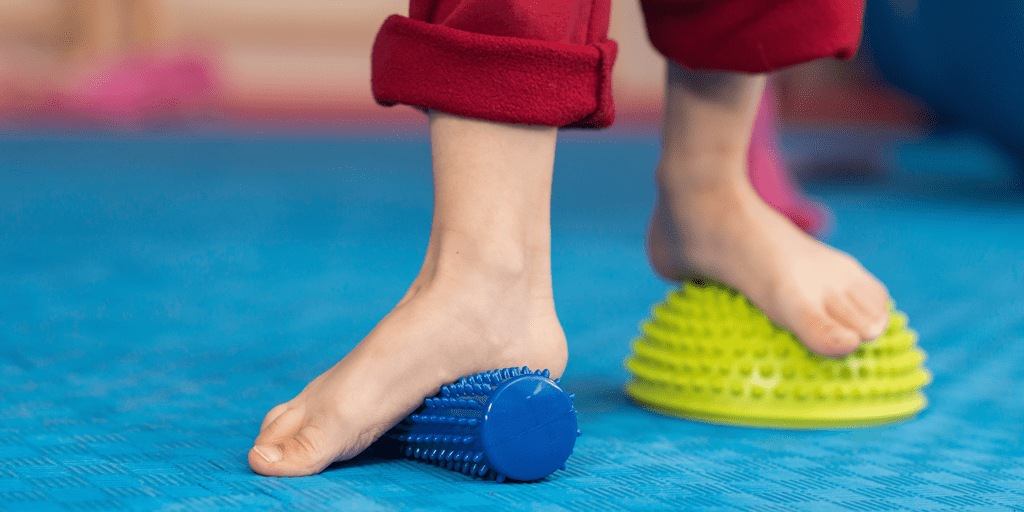
Did you know that almost everyone is born with flat and flexible feet? In their first year, baby feet grow extremely fast – about 2.5 cm! As children get older and start walking, their feet are still flat because the bones, muscles and ligaments are not yet fully developed.
In this article, we will discuss children with flat feet, and how to encourage proper foot development.
Foot development
The main arch of the foot, the medial longitudinal arch, begins to form at three to four years of age. This arch continues to develop throughout the first 10 years of life and many studies state that the mature foot posture is not obtained until seven to 10 years of age (Uden et al., 2017).
This means that we should expect our children’s feet to be flat during their first three to four years, and to then start developing an arch over the next seven or so years. Some factors that can affect foot development include poor-fitting shoes – shoes that are too small, too big, or too rigid – and not enough barefoot time at home.
What about Flat Feet?
Children with flat feet aren’t always problematic. As you can see from above, younger kids tend to have naturally flatter feet and therefore treatment is not always necessary. If your child goes up on their tiptoes you should be able to see their arch form. This is considered ‘flexible flat feet’. These should not be painful.
Ultimately, painful flat feet in kids are a problem. On the other hand, non-painful, flat feet in children – or adults! – are not a problem and do not need to be treated unless they are accompanied by any of the points listed below.
There are multiple reasons we see children with flat feet:
Their walking pattern is different
For example, if they do not push off from their big toe, but instead they use the inside of the foot.
Complaints of foot or knee pain
If your child is experiencing foot or lower leg pain, a Canadian Certified Pedorthist at Walking Mobility Clinics can assess their biomechanics and perform a gait analysis to learn more about how the mechanics in their feet are affecting the alignment in their legs.

Bunion development on the inside of the foot
A bunion, also known as hallux valgus, is a deformity of the big toe and the big toe joint that can be quite painful. Poor foot mechanics and improperly-fitting footwear are some key contributors to bunion development.

Frequent rolling of their ankles
Pronation is the natural movement of the foot as it rolls inward. While there is a big misconception that pronation is bad, it’s actually a necessity in the gait cycle, to absorb shock. Too much pronation, or just overpronation, can cause malalignment. Which, in turn, can cause foot pain.
Complaints their feet are tired or sore after activity
Sore feet and legs aren’t normal in any situation. When we spend more time on our feet, we increase the load on our muscles and joints. This can help over-use injuries and musculoskeletal disorders development.




How To Encourage Proper Foot Development
Here are some things you can do to help your children’s feet develop properly.
Find properly fitting shoes
Look for shoes with a supportive heel cup and flexible sole.
Encourage barefoot time
When it’s safe and appropriate, have your child walk around barefoot.
Doing this helps develop the muscles, ligaments and tendons of their feet and will contribute to arch development.
Play around and walk on different types of surfaces
This can include grass, hills, trails, gravel, sand, and other surfaces.
Talk to a Specialist!
If you have any questions about your child’s foot development, feel free to connect with us!
References
UDEN ET AL. JOURNAL OF FOOT AND ANKLE RESEARCH (2017) 10:37
